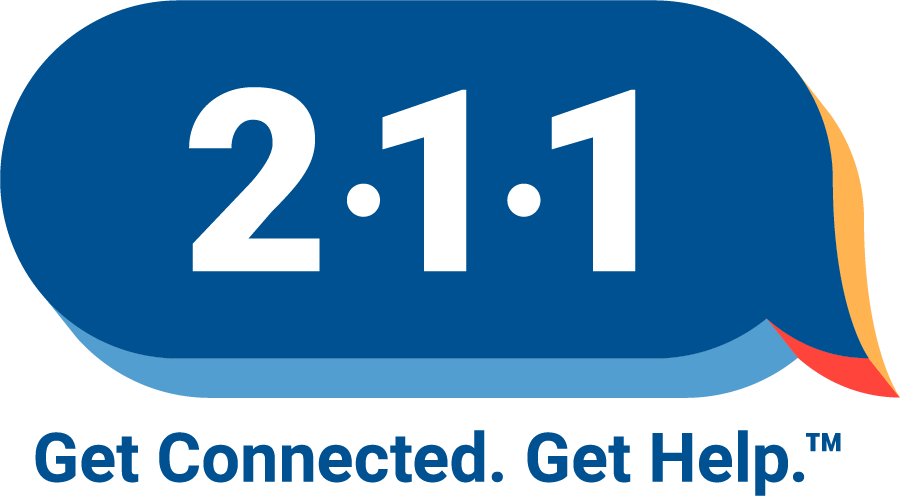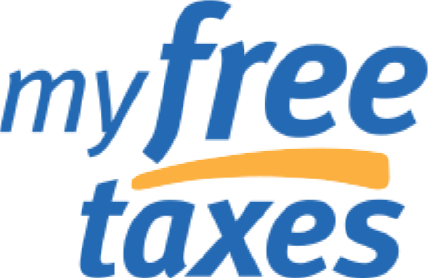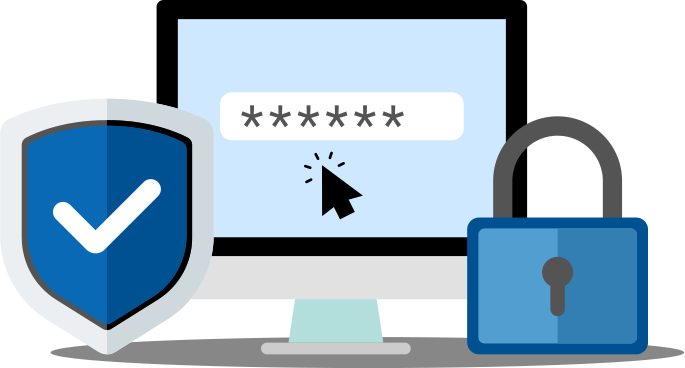Digital Deserts in the Golden State

Internet access today is like electricity or running water. It’s very hard to live without it.
Read time: 4 minutes
High-speed Internet access, referred to generically as “broadband” and including both wired and wireless technologies, is essential 21st-century infrastructure for economic competitiveness and quality of life. Internet access is required to apply for a job, to participate in school (checking a child’s grades or completing homework assignments), find and access health care and more. Virtually everyone has a smart phone these days, but a smart phone is no way to apply for a job or do schoolwork, and so it is no substitute for broadband serving an entire household.
The COVID-19 pandemic further highlighted just how vital a lifeline an internet connection has become, for businesses and employees to minimize disruption; for students to continue their education (albeit imperfectly); for families and individuals to address physical and mental health needs via telehealth and access services and social supports; and for friends and family to mitigate isolation.
These are among the reasons why California United ways have worked for over a decade to help low-income families get broadband at home.
Roughly one in three Californians — 31%, over 12 million people — are unconnected or under-connected, shut out from our increasingly digital society and economy, according to a report by UC Berkeley. These are either:
1) Households of all incomes living somewhere that doesn’t have physical access to high-speed internet; or
2) Low-income households living somewhere with broadband access, but who:
- aren’t aware of an affordable broadband program offered by commercial providers (like AT&T, Comcast, Spectrum, Frontier and others), are ineligible for those programs, can’t afford the service or a device, or can’t get service, or
- in many cases, have internet already but are paying way too much. Many households with incomes below $15,000 a year are spending upwards of $80–90 a month.
In this post, we’ll discuss the brute physical fact of where broadband is not available to Californians, and in our next post, we’ll discuss disparities in broadband adoption, by income, race and other household characteristics.
A primary reason for digital divide is inadequate infrastructure. In sparsely populated rural areas, as well as metropolitan areas where residents are very low income, the cost of building broadband infrastructure may seem unjustified by the potential revenue from potential subscribers, so the market has hesitated to provide this vital service. A California Public Utilities Commission report issued in April 2017 documented that 43 percent of rural households cannot get reliable broadband. But inadequate infrastructure is not just a rural problem, many urban neighborhoods lack high-speed internet access, or access is spotty.
Getting a complete picture of gaps in broadband access is difficult. Official maps available from government sources, such as the CPUC, rely on data from commercial carriers, which they consider proprietary and competitive information, so the maps are not very granular, so they likely overstate availability. (It is not uncommon for a census block to be listed as having high-speed internet, but some streets or larger sections of the block are unserved, and the only way to be certain is for an installer to visit the address.)
Below is a California Public Utility Commission (CPUC) map showing availability of internet at a speed of 25 Mbps down or greater. (25 Mbps is recognized as the minimum speed for effective participation in remote work, learning and telehealth.) Areas served are in green, unserved in red, and unpopulated areas are blank.
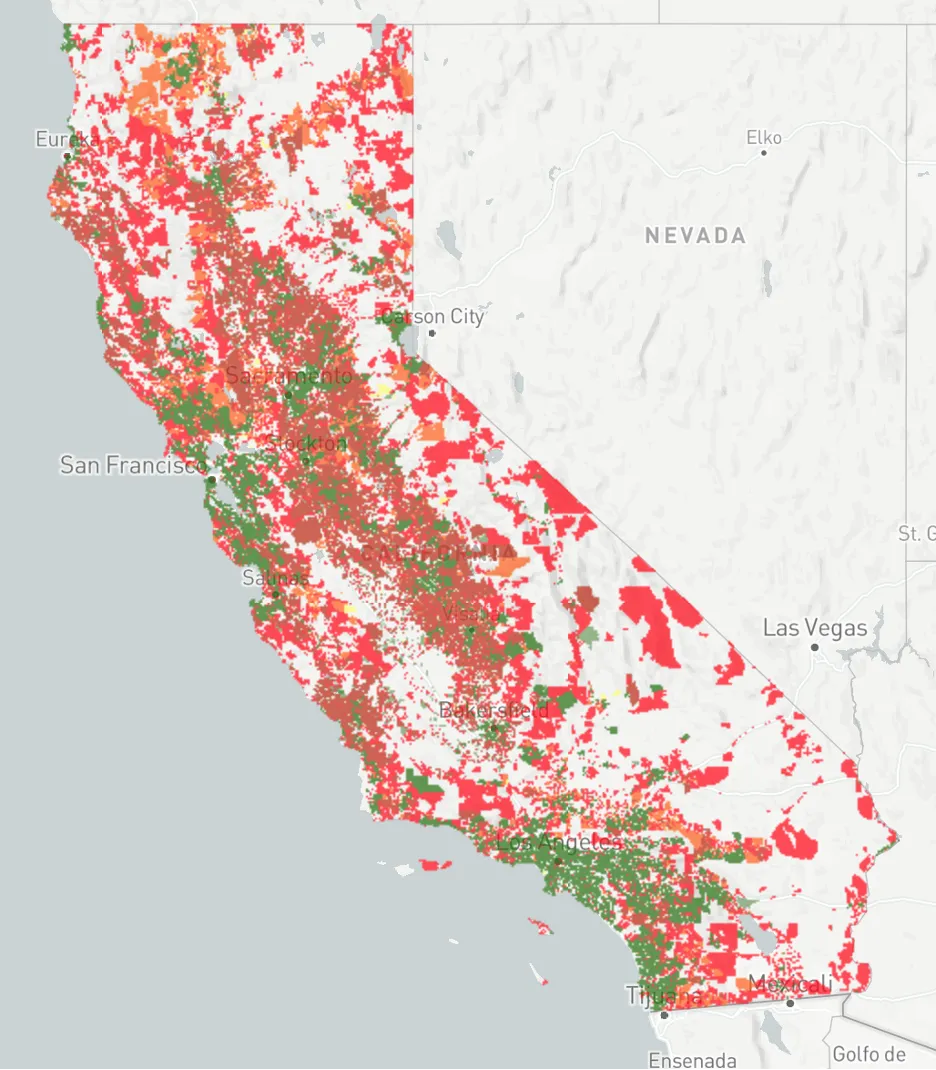
California ranks 13th among all states overall in broadband access for residents, according to Broadband Now; approximately 889,000 people have no access at all, and 1.3 million people have access at speeds below 25 Mbps, so approximately 2.1 million Californians, about 5%, lack physical access to broadband. On a percentage basis, a much higher percentage of rural households are unserved at this speed, 1 in 4 (26%), but the absolute numbers show this is not just a rural problem; 281,507 urban households are unserved, compared to 180,922 rural households, as shown in the table below from the 2020 Annual Report of the California Advanced Services Fund (CASF).

But the share of California residents that actually lack access is much greater; thirteen percent (13%) of California households reported no internet access in their homes, and another eighteen percent (18%) reported they access the internet through their smartphones, according to a 2017 statewide survey from the University of California, Berkeley Center for Intergovernmental Studies, commissioned by the California Emerging Technology Fund (CETF).
In Struggling to Move Up: The Real Cost Measure 2021, a United Way study of household financial stability, which finds that 1 in 3 California households do not earn enough to meet a decent standard of living, we find similar reported rates of broadband access, according to our analysis of American Community Survey data.
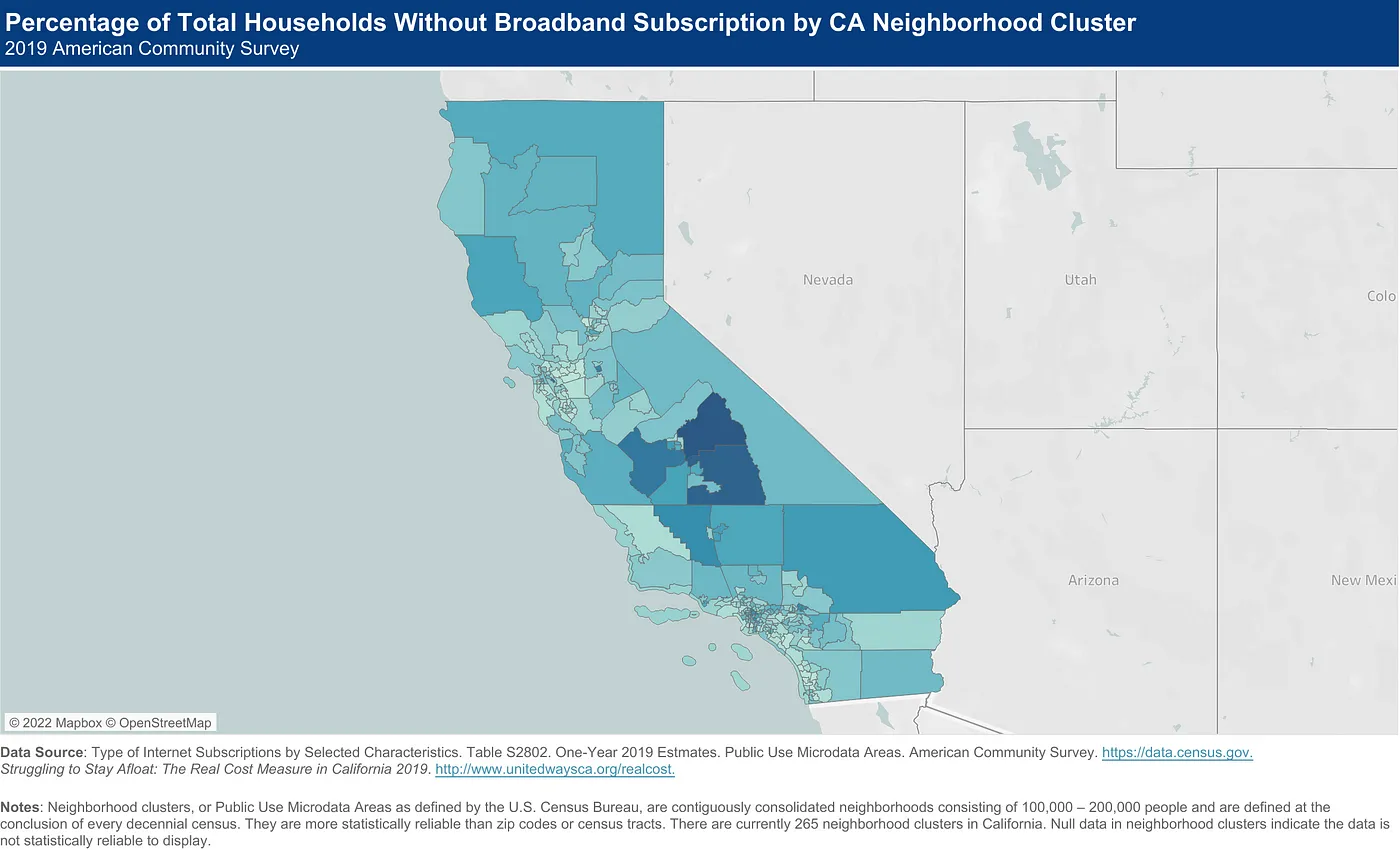
In our next post, we’ll take a closer look at these underserved households and challenges they face in accessing the affordable broadband programs offered by commercial providers.

